France
Paris
Switch to your local agency
Retour au menu
The business concept by women for women lately applied in the world of brands has been calling our attention. If on one hand we are living a chaotic situation, where feelings of radicalism and neglect seem to reign – and we are not speaking (only) of politics, on the other hand we have to value the openness we are experiencing regarding gender issues, representativeness and empowerment of different groups in society. It has been, is and will always be – as far as we are concerned – the time to open dialogue on inequalities and let them take center stage in the debate.
Data show that the female presence in leadership positions is still very limited, and not only in Brazil. In Standard and Poor’s 500 index, (stock market index that tracks 500 U.S. publicly traded companies), women make up only 6.2% of all CEOs. Moreover, they face a lack of diversity in the types of businesses developed. A GEM survey, conducted by Sebrae in 2020, shows that women entrepreneurs work mainly in 6 segments – among them food, beauty and clothing. Whereas among men, this figure rises to 14.
And what can we say about women’s self-esteem? A study conducted by Kantar (WPP) in 2019 in the UK, called What women want, revealed that 85% think film and advertising misrepresent the real women, leading two-thirds of them to skip ads that negatively stereotype them. The same survey conducted in 2021 with Latin women points out that only 25% of them feel comfortable and free to make decisions concerning their body and sexuality, showing that there is still a lot to be done by brands in terms of representation.
Knowing that there is still a long way to go, but looking again at the bright side of this discussion, we searched for references from brands and organizations headed by women who are turning the tide.
The first is a list compiled by Obvious Agency, which in itself is an inspiration, given the revolutionary way it builds content about and for women (it approaches everything: women’s rights, motherhood, self-care, sex, career, self-esteem, relationship, culture, trends). Obvious shared a list of six small businesses created by Brazilian women and how their brands transmit positive and affirmative messages. Take a look, it’s well worth it!
Another amazing example is that of the consulting company Filhos no Currículo, which invites companies to rethink working relationships and deconstruct biases about fathers and mothers. The initiative arose when Michelle Terni and Camila Antunes, the two founders, became mothers and were faced with a hostile labor market for those seeking to balance work and family life.
In the United States, the emergence of brands led by women in the category of alcoholic beverages, a sector traditionally taken by men and thought for men, is remarkably interesting. Actress Eva Longoria launched her own tequila brand last year – Casa del Sol – inspired by the goddess of agave, Mayahuel. Yola Mezcal also represents this trend: the openly feminist brand, founded and managed by 3 women, seeks to promote autonomy for its female partners who grow agave and produce the drink in the Oaxaca region of Mexico. Stepping further, the brand promoted Yola día, an “all-female” music festival, completely run by women: on stage, behind bar counters, and even working as security guards.
Women in power pull other women, creating a virtuous circle, as the numbers prove: a survey by the Women Entrepreneur Network Institute IRME 2021 states that 73% of women-led businesses are overwhelmingly female. Moreover, in this article of Endeavor we can see the direct impact that a leader like Luiza Trajano has on an ecosystem made up of hundreds of women, through her actions as an entrepreneur, mentor, investor and inspirer.
There is also a growing and powerful movement when it comes to deconstructing the menstruation taboo. An example of awareness campaign here in Brazil is the #ChegadeEstigma, by Intimus – Kimberly-Clark®’s brand of feminine care. “The campaign challenges society to break paradigms and negative perceptions about menstruation, which usually place women in a fragile and limited situation”, explains the brand’s Marketing Director Samia Chehab. “It is more and more my role to give voice and make room for these causes and also meet consumers’ current expectations about an active brand positioning in society”. Another woman, Thais Hamer, CBA B+G’s responsible for Intimus brand, shares Samia’s view: “the freedom I experience at work today and the purpose of the brands I assist, such as ‘Intimus’, in synergy with my values, fulfill me and motivate me to keep building a fairer world, where there’s room for all, men and women.”
And there is more! A recent collaboration of Pantone® with a Swedish brand of menstrual cups has resulted in the red hue Period, in a campaign to promote menstrual positivity, encouraging people, regardless of gender, to feel comfortable and at ease to discuss and normalize the topic.
Transcending business, the role of women in this pandemic must be highlighted. On the one hand, it is sad to see that the female entrepreneurs were the most impacted during this period, since they have to cope with double shifts – at home and at work. On the other hand, it is worth remembering that, from the 12 countries that have better coped with the pandemic, nine are governed by women. The positive role that the feminine view and handling can play in the leading of possible solutions with respect to the pandemic scenario, becomes clear.
Speaking of view, what do we see when we look inside? How are we behaving, in our CBA B+G community, towards women? From which stance are we discussing this struggle for social change and evolution?
Women are nothing short than 65% of our total workforce, and they hold more than half of the managerial positions (54%). Considering this large representation, simple but impacting initiatives have been sought and implemented. We have introduced, since 2019, an internal policy aimed at mothers, aware of the fact that during the first year of maternity it is hard for them to balance the roles played in their family, social and business life. In addition to the 4-month maternity leave secured by law, a short-time and gradually restored work schedule – in a home-office regime – allows mothers to resume the regular work activities 12 months after giving birth.
Working on the assumption that we are all exposed to structural contamination, gender issues are being closely observed, beyond the figures. As for example at the Board of Directors, where only one of the four positions is held by a woman. “Balance is the key-word”, says Shirley Rodrigues, HR manager. “The search for equity is one of the reasons for the internal study we are conducting to understand, historically, how our recruiting process and career development program have been driven, so that we are able to realize, in the course of time, if we are promoting gender equality, for example. And if not, what are the factors that cause this imbalance, in spite of our mostly feminine management environment – which has an active voice concerning promotions and bonuses. We want to understand which causes are structural – and therefore invisible to the arguments; which are cultural – and must be reviewed; and finally which are contextual and temporary… an on-going analysis and adjustment motion which, in spite of the two decades of operation, we are examining in-depth for the first time.”
From brands to products, personal stories to social policies, across countries and continents, and in all spheres, women carry the power of change in a world that longs for balance through pro-women solutions. Finally, we would like to indulge with a time capsule, recalling now and forever, some of the icons of feminism. To print and fix on your fuchsia, cyan, black, period – or whatever color you please – wall!

Fragmented markets, multiplied channels, diversified audiences: it’s increasingly complex for companies to offer their products and services. Under pressure to grow exponentially, they often launch a very high number of new lines every year. In the United States alone, 30,000 new products in the FMCG (Fast Moving Consumer Goods) category are launched on average each year by thousands of brands (Nielsen 2019). But the expansion needs to be well done to work. The uncontrolled proliferation of new brands can confuse the consumer, diluting positioning and generating unnecessary expenses.
In view of this reality, having a solid portfolio strategy, associated with a coherent brand architecture is essential to leverage its potential in the market, facilitating management, directing expansion and defining a clear vision of innovation. But what exactly are portfolio strategy and brand architecture – complementary yet different concepts, and what are their benefits?
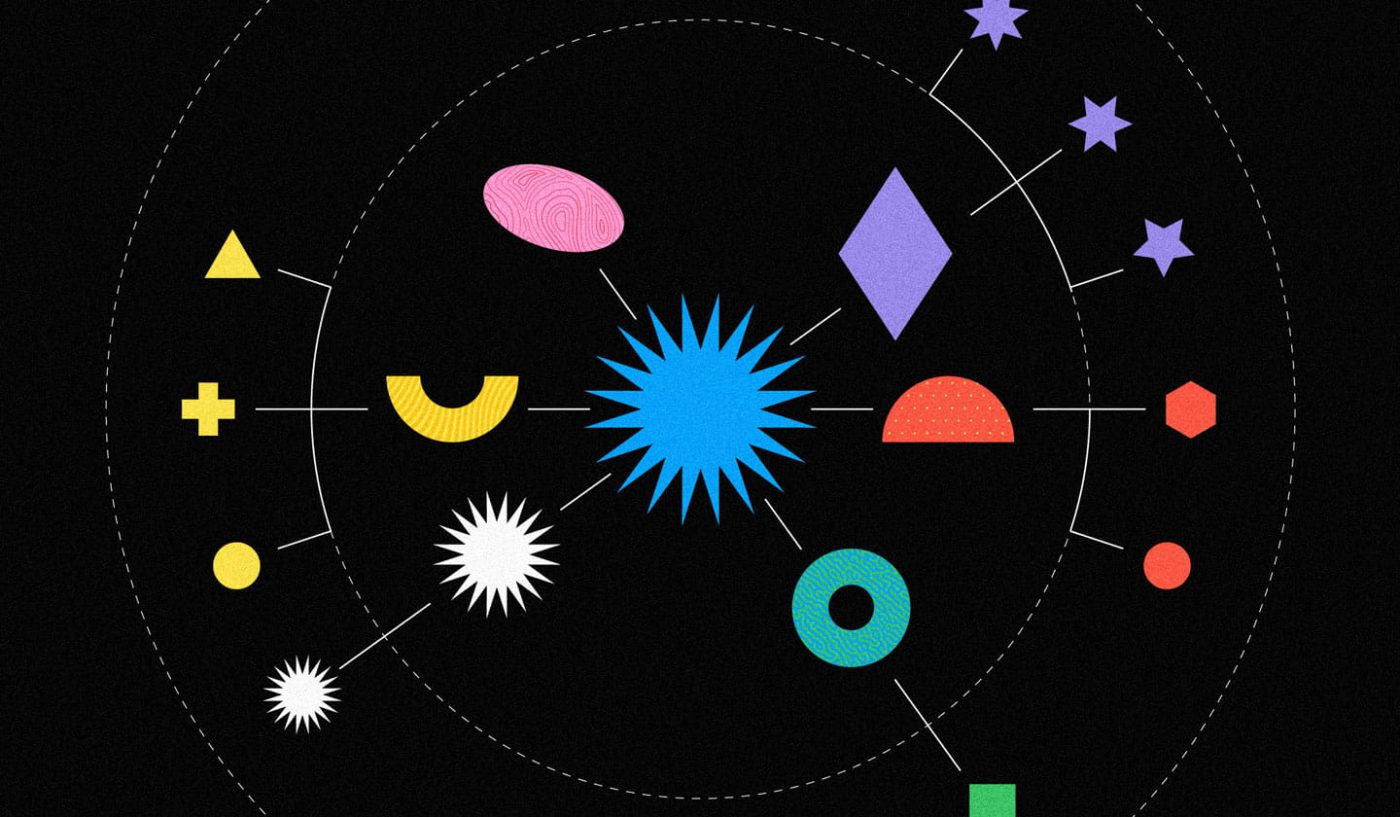
For Alex Espinosa, head of strategy and partner at CBA B+G, “Portfolio strategy, together with brand architecture, is a journey through which the company defines, organizes and brings life to its vision in a way that is connected with its offer. Only then can it translate these elements to the consumer.” This makes them key branding elements, as they reinforce differentiation among competitors, in addition to guiding design choices and helping to outline a clear vision of innovation.
On the other hand, David A. Aaker, author of the book Brand Portfolio Strategy (2004), compares the brand portfolio to a football team that works together, where each member has defined roles to enable and support the business as a whole, aiming to prosperity and expansion. This view of brand management isn’t limited to large multinationals. Regardless of the size of the company, it contributes to:
Optimize investments, getting rid of unproductive brands and strengthening the identified key brands;
Segment messages, products and services for each of the target audiences, making the customer aware of the proposals of each brand;
Ensure visual and verbal consistency of all lines and SKUs.
Polenghi: how the construction of the portfolio architecture strengthened the brand’s presence in special cheeses
Polenghi, the most beloved cheese brand in Brazil that has been on the market for almost 80 years, came to us to make a deep repositioning, seeking to capture its essence and attract new consumers. One of the major challenges of the project was to develop a solid portfolio architecture because the brand had never created one. After in-depth research, we got together with customers and consumers to structure it: we connected each pillar with its positioning and consumer needs (need states). More specifically, the new organization of products showed the need to strengthen the brand’s presence in the special cheese segment. This was the impulse needed to get rid of the Polenghi Sélection, a sub-brand that was not bringing the expected results and create Polenghi A Queijaria®, with the mission of democratizing fine cheeses through unique and uncomplicated products with a renewed identity. Read the complete portfolio repositioning and structuring case here.
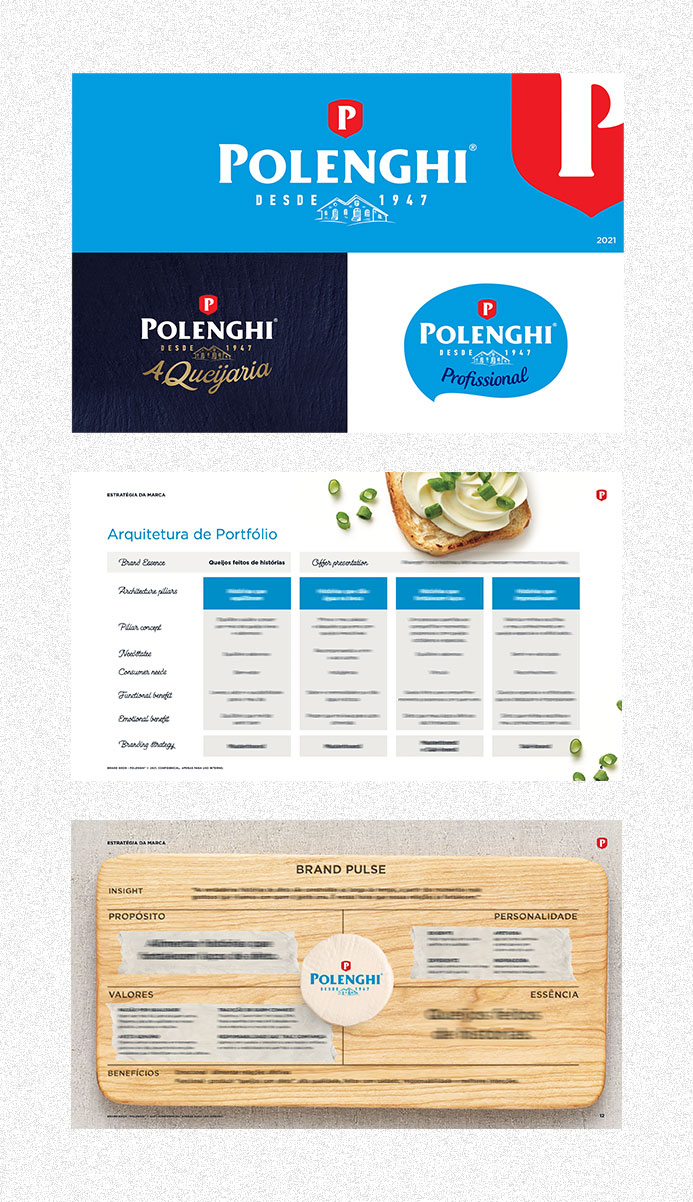
Within the portfolio strategy, architecture is the system that establishes a clear value proposition for brands, helping their audience to identify them. In addition to defining the hierarchy and the relationship between them, it establishes how brands are perceived by consumers, their unique characteristics and how they satisfy their needs. Therefore, the architecture makes it possible to create a conceptual guide on how this portfolio should be developed and actually presented to consumers, including answers on how each brand should communicate, visually and verbally.
From PORTFOLIO STRATEGY…
Aims to create synergy, optimization, and clarity, providing answers about what the company should do regarding the competition, and its market share.
A global view of brand management, prior to brand architecture.
Focused on the company’s business vision.
In-depth analysis of the role and relevance of each brand for the business.
Helps the company make decisions about where to place investments, which brands to prioritize, which brands to eliminate, and where to innovate
… to BRAND ARCHITECTURE
From PORTFOLIO STRATEGY…
Aims to create synergy, optimization, and clarity, providing answers about what the company should do regarding the competition, and its market share.
A global view of brand management, prior to brand architecture.
Focused on the company’s business vision.
In-depth analysis of the role and relevance of each brand for the business.
Helps the company make decisions about where to place investments, which brands to prioritize, which brands to eliminate, and where to innovate
… to BRAND ARCHITECTURE
Together, they make it possible to build relevant, differentiated, and resilient brands.
There are four famous architectural models adopted by companies, which help them choose the most appropriate relationship between the master brand and the other brands in the portfolio.
I’m green™: how the transformation of a product brand into a masterbrand expanded its scope in renewable sources
For Braskem, we designed the expansion of the product portfolio in favor of the Circular Economy based on the I’m green™ brand. The brand designated only one type of plastic resin produced from renewable raw material, the so-called ‘bio-based’, while other products from a renewable and recyclable source were scattered throughout the portfolio. When we looked at the portfolio strategy as a whole, we saw an opportunity to expand and bring together all renewable sources under one strong brand, the already recognized I’m green™. Thus, through the reorganization and transformation of a product brand into a masterbrand, we expanded Braskem’s sustainable activities, building Brand Equity. Read more about the case here.


There are three fundamental elements to take into account when creating the pillars that will structure a brand’s portfolio:
Positioning: When creating the pillars, the portfolio must be connected with the positioning of the master brand, present or invisible, and all its sub-brands or endorsed brands, reflecting their values, attributes and personality, avoiding developing offers that are not aligned with your vision and that dilute your brand equity. Therefore, our portfolio organization always starts with a deep redefinition of the brand essence, as this will provide a clear direction.
Consumer needs (needstates): It is common for companies to segment by functional criteria strictly linked to their internal vision, such as price, channel or sales units. However, the most successful segmentation must be driven by consumer needs. Therefore, at CBA B+G we prioritize segmenting by needstates, which can be defined as the intersection between what consumers want and how they want it.
Business objectives: The portfolio strategy bridges the gap between brand management and the company’s business vision. Therefore, in addition to the positioning, it is necessary to keep in mind how each pillar and each brand meets these objectives and, if they do not meet them, the right decisions must be taken to ensure good results, growth and profit.
Carlos V: how the creation of emotional pillars, based on consumer needs, strengthened the brand and guided the expansion of the premium line
Carlos V, Mexico’s most popular and traditional chocolate, was suffering from intense competition from other snack brands, perceived as having higher quality and greater engagement with children. The challenge was to modernize it and build a unique territory while maintaining its historical legacy.
When reviewing the entire brand strategy, we saw the opportunity to expand audiences to also target chocolate-loving adults, re-signifying the brand’s fun and magical personality. Based on its new essence, we reorganized the portfolio so that each pillar was aligned with the needstates and brought emotional attributes. This helped define differentiated product features, which led to the establishment of powerful brand properties and a complete renewal of the visual identity of all lines. See more about the case here.
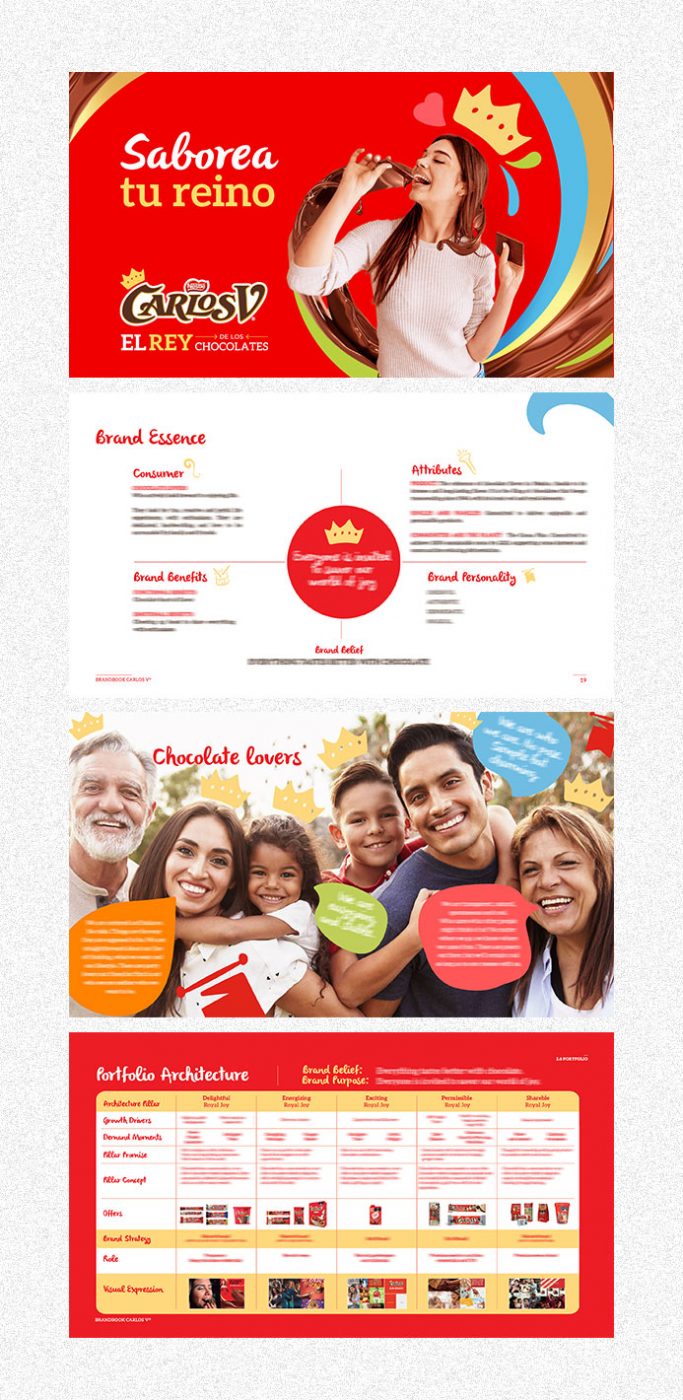
Designing a coherent portfolio strategy with a solid architecture is not easy, which is why we help our clients to draw a complete vision of the brand, uncovering opportunities for line extensions and renewals. Polenghi, Braskem and Carlos V are just some of the portfolio strategy jobs that we have developed. We have many other partners such as Häagen-Dazs, Ninho or Purina. Come and transform your brand with us, creating clarity in your brand portfolio, based on deep positioning work. Click here for more information.
CBA B+G
Goodbye 2021, long live 2022!
After almost two years of pandemic, people around the planet have resumed their activities, with a burning desire to make the world a better place.
To start off this new cycle on the right foot, we invite you to read the Useful Design Trends 2022, our proprietary report with 15 trends in five major areas, which inspire utility through design.
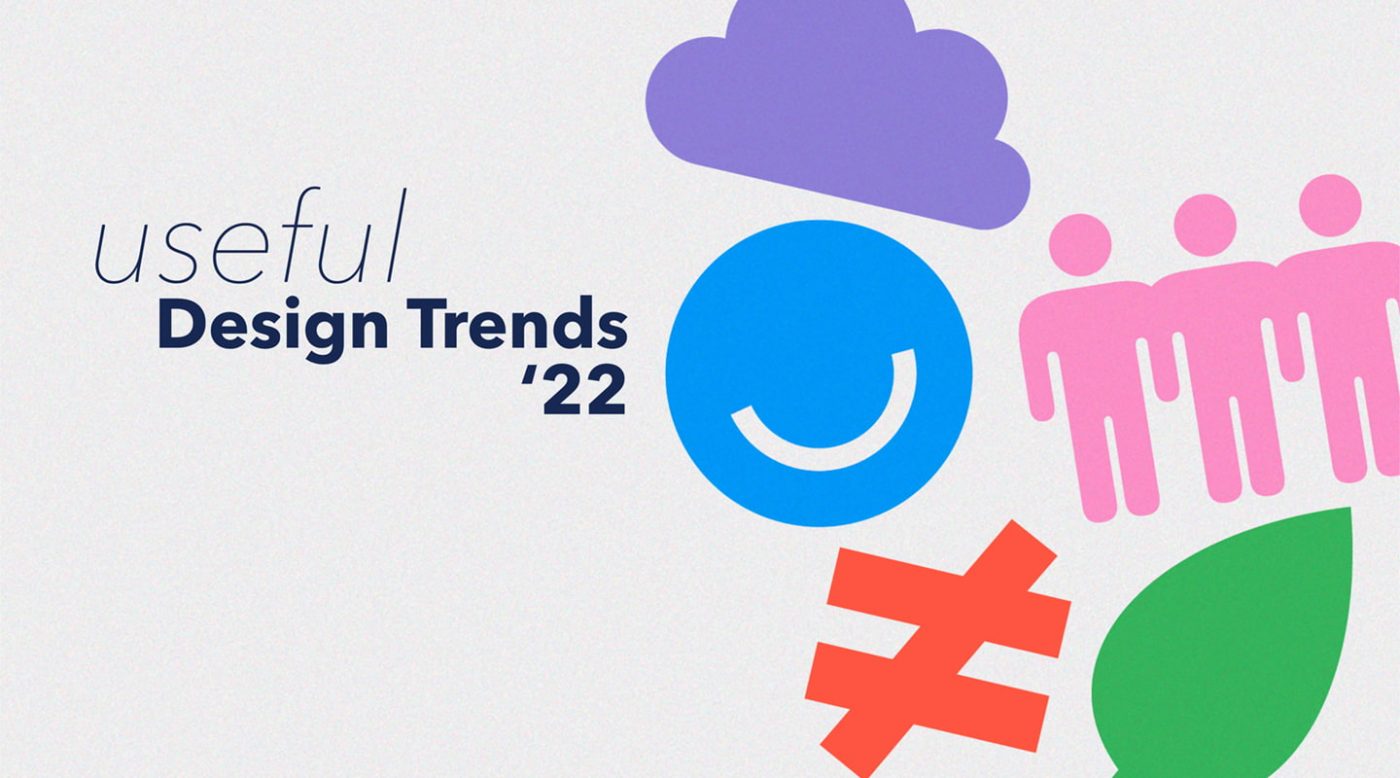
To access the report, subscribe to Blimp, our monthly newsletter which brings together exclusive content on branding and design.
If this report has given you ideas, do not hesitate to contact us, to think together about how to make them happen.
Interaction and transformation are the actions that guide Café+, the internal initiative of CBA B+G – a space to think about sustainability, diversity, inclusion and many other urgent matters. Last month, our guest speaker at Café+ Circularity, was Fabio Sant’Ana, Braskem’s Specialist in Market Development of Packaging for Circular Economy and Consumer Goods.
The almost two-hour chat was attended by a room full of inquiring people, who were eager to learn what the designer and entrepreneur had to share. Here are some passages:
How should design rethink the plastic in the packaging?
We are well aware that this is an urgent topic, and the market has changed a lot regarding the briefing for packaging production. In the past, progress used to be based on cost, performance and communication; today the scenario has changed; these factors are still important, of course, but other drivers, such as sustainability and convenience, have been included.
The constant consumer movements demanding the commitment of companies to sustainability has led to increasingly complex environments. In this context, which requires an enlarged look, the circular economy model gains momentum, and design plays a very important role.
Tell us a little bit more about circular economy.
The circular economy is a business model that looks at sustainability as an intrinsic part of the process of industrialization and monetization, unlike the linear economy model. In the latter, the high point is when the consumer buys the product, and the idea is to make him buy again. However, in that model, there’s a constant extraction of raw material in high volume, while the value of the product decreases dramatically after use, since after use no alternative is considered other than low-value disposal.
The circular economy model promotes reuse and alternative solutions for post-consumption, such as maintenance, remanufacturing, and recycling. If we focus on the reuse model alone, which proposes the use of products for longer, we will notice that different opportunities for new business models associated with it eventually arise. And this requires a design-oriented thinking.
What do you mean? How does the circular economy encourage new business models? In what sense is it innovative?
It is innovative in the sense that the focus shifts from the product itself, to services. For example: there are furniture brands that, being familiar with the practices of the circular economy, have developed a new service: the repurchase of used furniture (buy back service) – and doing so with an interesting and engaging narrative, proposing that old furniture gain a new life. Another example: not so long ago, it was considered top-notch for computer companies to be able to assemble their computers in two minutes. Today, their KPI is certainly moving towards offering a product that can also be DISassembled in two minutes… It is the application of the concept ‘reuse, recycle, reduce’, and this directly impacts the type of product that we, designers, have to propose and design.
In your opinion, what should be done to broaden the vision of ‘product as a service’ and engage companies in this issue?
It’s a complex path. That’s how we see it at Braskem: we have a short-term focused team dedicated to the sale of resins. Meanwhile, the market development area thinks of a medium and long-term scope, predicting and planning five years ahead, to build a future market for managers to act. So it is a construction; a long, continuous and extremely necessary transition. It is an exercise of looking to different directions and changing the way you relate to products. We need to face the issue of scarcity, and in this sense, the circular economy, as a hybrid model, presents itself as a viable path: it is more sustainable both economically – searching for solutions and models that replace use by reuse, the production of goods by the supply of services – as well as environmentally, proposing a greater balance of ecosystems.
It’s a controversial topic, even more so in petrochemicals. Thinking from our point of view, as a design office, what should be the approach with customers? Where should we focus first: on material resources, logistics, post-consumption?
There is no ready recipe, it depends on the market in which each company operates. In the food sector, for example, the attention given to packaging demands a specific approach, since it works almost like an extended concept of the health and nutrition that it involves. In the hygiene products sector, on the other hand, the issue of water consumption is crucial, so the approach can be sustainability in the industrial process.
But the entire industry, to a greater or lesser extent, is launching its commitments to sustainability, which are based on four pillars: material optimization; production of 100% recyclable, reusable or compostable packaging; use of recycled and use of renewable. Based on that, it is necessary to look at the customer’s need and understand: where are they inserted? What kind of business are they in? What is your consumer’s journey? And how to integrate it with the packaging journey, making it more circular and sustainable? While industries think about efficiency, the FMCG sector also values other attributes, such as consumer experience. The power of the brand reverberates differently depending on the universe. All of this provides the consumer with different value propositions.
Indeed, there is a great opportunity to make the most of the consumer journey. How to design a product, thinking about this journey?
Influencing the journey can be a starting point, but circular thinking is much greater. It is a responsibility of businesses and consumers. See, the world works in a linear way, that’s the challenge. Everyone has to compromise and collaborate from their position; it is more than sustainable packaging; it is a sustainable solution. The entire cycle – supply, use, reuse – requires a transition to new models of thinking and consumption. We are all looking for solutions, and it is not just about who “pays” for the changes.
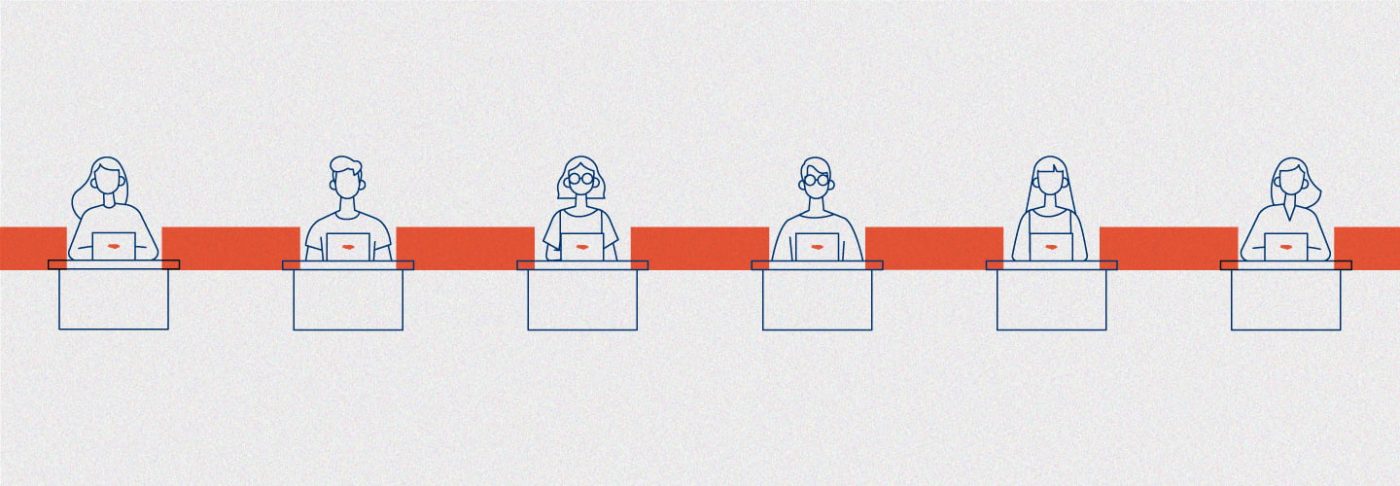
The work-from-home culture, previously restricted to a minimum share of the population, has become the motto for most companies of all sizes, worldwide, and in less than a year. For us here at CBA B+G, it was no different. Among all the challenges that this moment of transformation has brought, perhaps the greatest of them is to keep alive the culture of the company and the link between its members, despite the distance and isolation. And what is, after all, company culture and how can we keep it alive?
A company’s culture is defined by a set of elements that reinforce or discourage patterns of behavior and values within the organization, reflecting the way it operates. Do you know when someone says that a place is “toxic“, or on the contrary, says that it feels like ”being with family”? Yes, this refers to culture. And it is not connected only with the well-being of employees. We are increasingly realizing that companies with strong and healthy cultures impact productivity and business results. For Livia Brandini, founder & CEO of Kultua, a startup that recently conducted the culture diagnosis of CBA B+G, understanding the culture installed in the company is the first step to successfully drive any change in the organization. She says:
“Strengthening organizational culture and engagement at work increases business results by more than 20%, encouraging more positive relationships and work experiences for employees. There is no doubt, cultural barriers have proved to be the main obstacles to the transformation process necessary for the prosperity and health of organizations.”
From home, at a monthly meeting created to talk about ESG issues (come learn more about Café+ here!), the agenda was exactly this: and now, what will be the future of work, outside the office? Among the good reflections that emerged, we gathered key elements that we identified as part of a company’s culture, along with ideas on how to deal with them within a remote working context.
People: companies are made of them. Without them, nothing exists. The quality of the relationship between people who coexist within a community says a lot about the values of that place, creating a sense of belonging to something greater. In face-to-face work, it is easier to keep in touch with people inside and outside their respective areas, or to know what is going on by inviting a workmate over for a coffee. In a work-from-home regime, people from different areas can work in the same company and never even see or know each other.
In order not to lose the connection between people and distinct areas, it has become even more important to create group dynamics that involve different areas on a regular basis and to have communication channels that facilitate spontaneous exchange between people – to talk about work or any other subject. We all like to meet colleagues also to relax and talk about trivial things. This lightness makes the work more pleasant.
Rituals: These are all the habits that have a special meaning in the routine, bringing a breather and creating a common identity. In the case of CBA B+G, we can mention the birthday celebrations with everyone in the agency singing “Happy Birthday” and eating a piece of cake, the collective meditation every Thursday at noon, or even the Pet Day (day when pets were welcome to spend all day in the office with us).
And how can we recreate these significant moments in a digital context? Here, our suggestion is to adapt: find new ways that suit the online environment, rather than romanticizing it and wanting it to become a copy of the face-to-face reality – it is not. From this understanding, there are numerous possibilities to recreate rituals in a hybrid way, half physical and half digital, such as keeping happy hours and breakfasts at a distance – with real beer, coffee, and Brazilian cheese bread.
Institution: Companies are places of work, which implies seriousness, rules. Cultivating a certain ‘discipline’ is also a necessary and welcome attitude, as it suggests guidelines that keep the focus on results and productivity. What’s more, it shows employees that they are not left to their own devices and that the leaders are committed to guiding and empowering them.
Currently, the first of the golden rules is to communicate, communicate, communicate. The second is to trace growth paths for everyone in the company, building a career plan, providing feedback and focusing on self-development. It is true that Human Resources and internal communication have never been so fundamental.
Environment: The physical space is also part of the culture, it is the embodiment of the company’s vision, conveying its values to the world. In many companies, the lobby is a place where one proudly displays the manifesto, beliefs, or any other symbol that represents their mission. The environment has the ability to put all employees in the same tune, typical of the company.
And what is the size of the challenge we face nowadays that each one is immersed in their personal bubble? Some virtual dating platforms, such as Topia and Gather are seeking to solve this issue, with the promise of recreating customized offices that mimic the physical space and bring the spontaneity of unplanned meetings.
We are beginning to enter a new era and one thing is clear: for many (most?) companies, nothing will be as before. With advantages and disadvantages, the remote and hybrid working models have come to stay. Businesses of all sizes have the unique opportunity to rethink processes and give new importance to the culture of the company and its employees. After all, there’s give and take on both sides, every day.
The saying goes that a picture is worth a thousand words. In design, this maxim often proves right and ultimately determines the success of many products. However, when it comes to brands, the speech is of great importance.
For a branding project to be complete, it is necessary to create a visual identity as well as a verbal identity, which will set the brand’s tone of voice. This is nothing but the emotional utterance of what the brand represents and has to offer to the world, said and expressed in its own words. Put like that, it sounds simple.
In effect, the path to this construction is long and begins with the strategic positioning, when the questions to be answered are: why does the brand exist? what values guide its actions? – and consequently – what is its personality? Then, the story to be told becomes clear, and the first significant verbal expression that normally arises is the brand manifesto.
A few years ago, this was considered internal and confidential content, but now brands have realized that this information has to reach everyone. The brand’s manifesto makes everything, or almost everything, become evident. Here is a ‘classic’ and well-known example that shows what I mean: while The North Face positions itself as a brand for people who are passionate about outdoor adventures, its competitor Patagonia defends socio-environmental responsibility (going as far as making an anti-consumption announcement, in 2011). Both brands are in the same category, targeting the same consumers, but they have different beliefs and stories. The question is, what brand does each person identify with?
A great challenge when creating a verbal identity is to connect the speech not only to the brand purpose, but also to the people that work with the brand and, of course, to the target consumer. And it is this practical expression, carried on daily, that makes it real. It is not just about creating attributes, it is necessary to reflect the brand’s human traits and dig deeper, thinking about the words that should be used and the ones that should not. The brand needs to be real, authentic and honest, in the first place.
As a result of social networks, algorithms, and artificial intelligence, relationship building is highly valued, and increasingly human interactions are expected. It becomes clear that verbal identity does not refer only to written text. It is the speech that counts, which can have different formats and sizes – video, audio, or a demonstration of support for some everyday topic. And then we face another sensitive issue for any brand: the decision on whether (or when) to speak out on topics, defend causes or highlight a position, which can sometimes be controversial. The answer will depend on each brand, and obviously, it is also a strategic decision. Oftentimes being neutral, or not taking a stand, can be worse. Not taking a position can be seen as a stance. Tough, huh? I suggest reading this text, about activism and branding, that clarifies ideas and lists good practices on cause engagement and positive impact.
In a society in constant change and with social ruptures like the one we live in, it is key to have all brand stakeholders aligned. Brand books and guidelines are important but even more relevant is to inspire people, internal and external teams; you have to be consistent, but also flexible. After all, although it is the brand’s voice, it does not speak alone.
Ricardo Oliveira, Creative Director at CBA B+G
Proceeding with the previous reflection (read here), in which we approached the fantastic world of games and how brands are dealing with this universe of new possibilities, now our gaze turns to the engaging mechanics of games, known as gamification. They represent valuable opportunities for brands and agencies to create new experiences in research, innovation and design processes and methodologies.
We can define games as something we do to entertain ourselves, with a clear goal, and challenges along the way that affect our performance. That is, when we talk about gamification, we are approaching these three key elements: pleasure, objective and interactivity. What is behind these elements and why are all spheres of society trying to apply them in different ways?
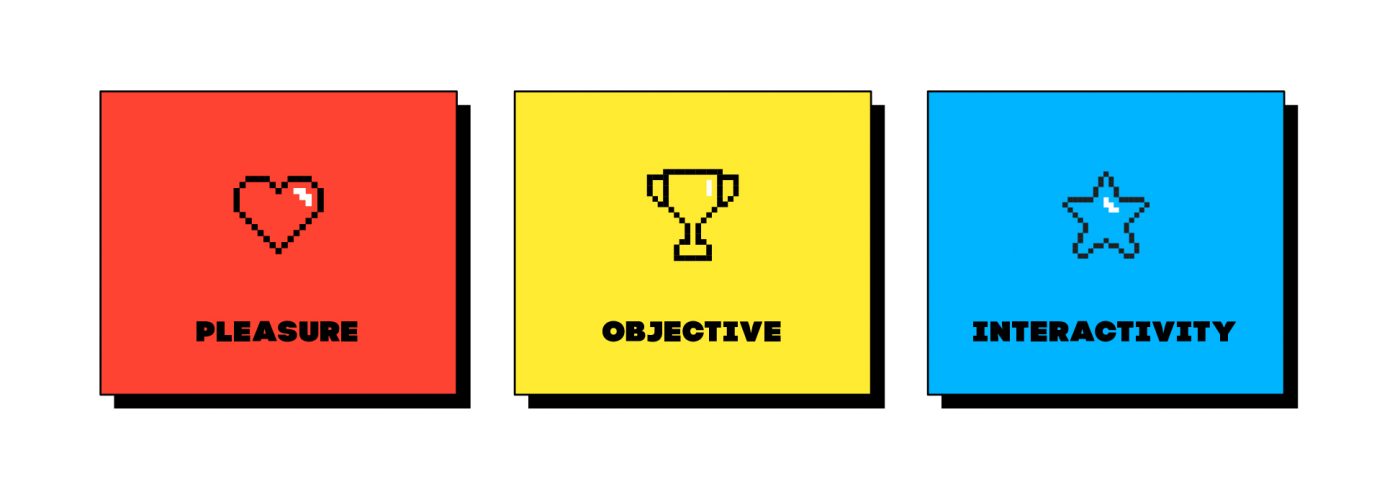
The principles behind gamification have always existed, so why is this phenomenon now gaining ground? For Vicente Martin Mastrocola, assistant teacher at ESPM where he teaches digital platforms, Game Essentials and Game Design, “companies have begun to understand the motivational techniques used by video game designers and apply them in other contexts. These techniques include goal design, badge recognition, team collaboration, stimulation of competition via rankings and points accumulation.”
Just as with the porn industry in the 80s, the game industry in times of pandemic seems to be the driving force for the implementation of emerging technologies such as augmented reality, virtual reality and mixed reality, accelerating their use outside of it. There are plenty of examples: The New Yorker magazine has just released its first animated film in virtual reality; the 2021 edition of the SXSW festival was all online and interactive; Folha de São Paulo newspaper conducted a survey on the impact of the pandemic in an immersive game format; The Black Mirror series produced an interactive episode with multiple endings.
For brands and agencies, we see some opportunities to apply these experiences in processes and methodologies, and in how to interact with the public. For Carina Benitez, designer at CBA B+G, bringing this kind of dynamic to the corporate context makes the contact between all participants more enjoyable. “When we gamify the process, people instinctively want to participate more. This way, something super-ordinary and mundane in their routine ends up gaining a new look.”

Video games and immersive technology possibilities promise to revolutionize the way we consume and interact with brands. However, it is important to keep in mind that we are also experiencing a technological fatigue: excess screens, confinement and social distancing can lead people to seek a reconnection through physical contact. That’s why we bet that, in the future, brands should invest in gamer culture beyond pure digital, with playful experiences that mix digital and real, such as augmented reality. Our Branding for the future playbook and our article on empathy are good reading tips for those who want to delve into the importance of brands’ online presence and use of hybrid features.
Contact us if you want to chat about the challenges and opportunities for your brand. And if this topic inspires you, and you are or know business professionals, strategists and designers who are interested in being part of our team, write to [email protected] telling us about your expectations, goals and history. We are always in search of talent!
This article had the contribution of: Carmen Beer, Ana Cerqueira, Giuliana Sanchez, Thaísa Miyahara, Ana Paula Moreno, Fabiele Nunes, Carina Benitez, Fabiano Naspolini, Vicente Martin Mastrocola, Josy Lamenza, Daniela Irrazabal, Rosario Maglione, Renato Storni and Luis Bartolomei.
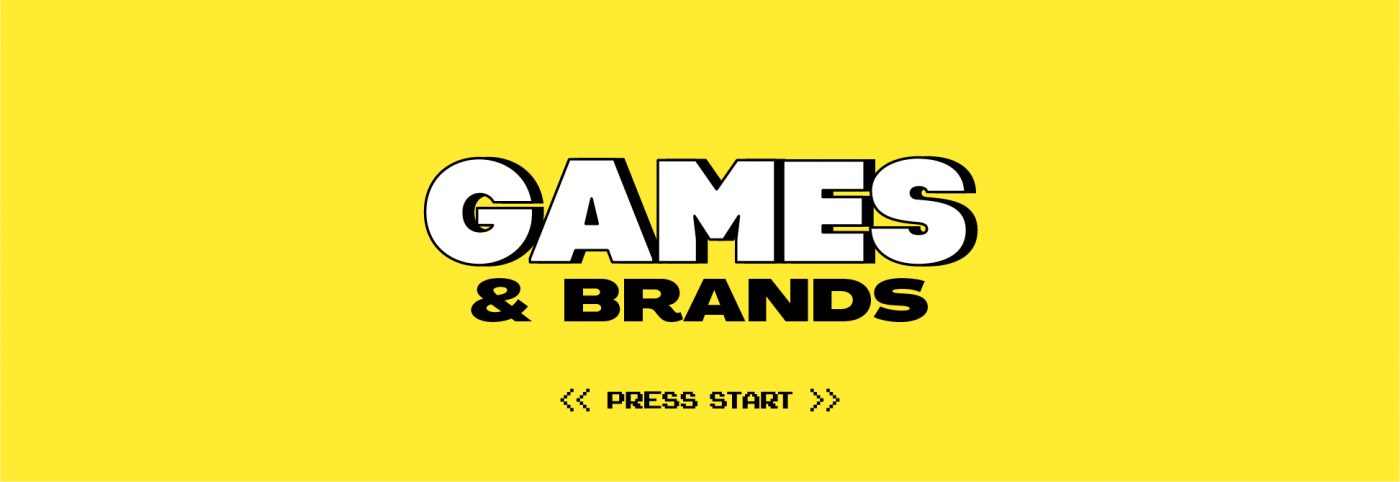
People have never played so much as nowadays. The fast-paced growth of the gaming industry triggered by the need to stay at home during the pandemic is making games win an increasingly diverse and wider audience. The figures are dizzying: in 2019, the market had a turnover of 1.5 billion US dollars in Brazil and 152 billion worldwide, leveraging more investments than cinema and sports. In 2020, electronic games were the most discussed topic on Twitter, with 2 billion tweets. What does this universe represent for brands and how can they play the game?
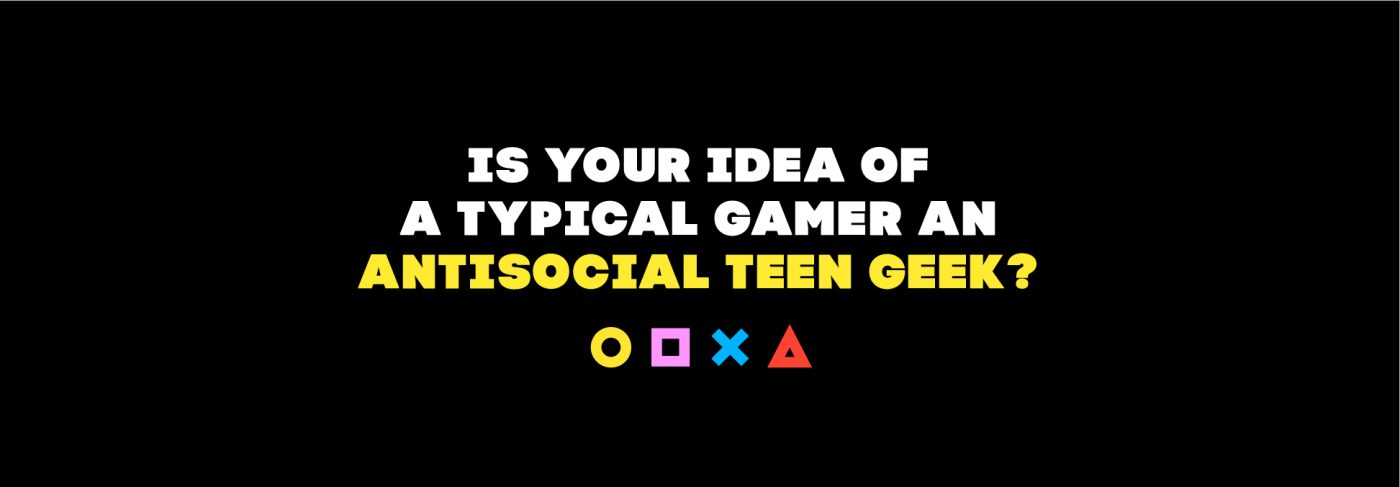
There is no doubt that games represent today for young people what music used to represent in the 90s: cultural identity and the feeling of belonging to a community. Games are intrinsically linked to young culture, today more than ever. But if your idea of a typical gamer is an antisocial teen geek, think twice. From Candy Crush to Fortnite, the profiles and ways to play are numerous, with games that fit everyone’s time and pocket, matching different lifestyles, personalities and interests.
According to the Pesquisa Game Brasil 2021 survey, 72% of Brazilians say they play electronic games, and most of them have played more online games since the beginning of the pandemic. The casual gamer is best represented by a woman between 25 and 35 years old, while the hardcore is usually a man between 16 and 24 years old. The survey also pointed out that almost half of the players are from the middle, lower and poor social classes. For all of them, the mobile phone is the choice of preference. This explains the success of games like Free Fire, available on mobile and with more than 100 million downloads. On the other hand, consoles are declining, much due to the exorbitant prices charged in Brazil. For Claudio Lima, CEO at Druid Creative Gaming, “the mobile has turned the key to the gaming market in Brazil. Playing was for upper-class individuals, it demanded a console or PC, and that was very expensive. Now, anyone can play. Kids today dream of becoming Free Fire players instead of becoming soccer players.”
In addition to playing, millions also watch other players, professional and non-professional, through streaming platforms that are growing non-stop – Twitch, for example, has more than 15 million daily active users. A global survey in 2020 pointed out that gamers between the ages of 18-25 spend an average of 4 hours a week watching other people online. This phenomenon is creating new types of influencers who play matches with their audience, sometimes hundreds in the same day, creating authentic bonds and a true closeness. The Brazilian gamer Cellbit, for example, has been recording videos for Twitch and YouTube since 2012, counting with more than 6 million followers, with a total of 300 million views.

The gaming industry is shaping the future of entertainment, with varied and complex productions, immersive technologies and universes full of possibilities, besides impacting the streaming industry.
Immersive Games like Beyond Two Souls or Cyberpunk benefit from high-budget investments worthy of the biggest Hollywood productions, with the participation of the best writers, actors and artists. The result is the creation of incredible narratives, characters and soundtracks. New immersive technologies such as virtual reality engage the player intensely and fully, while augmented reality blurs the boundaries between real and virtual. And of course, in these universes, players have the possibility to do many other things: their avatars can watch music shows and spend their money in different ways, simulating the real world. Roblox, a very popular platform that allows users to create their own worlds and mini-games, aims to ”unite the world by building a metaverse (a virtual world that digitally replicates the real one), where millions can meet up in games, conferences, or in collaborative jobs within a virtual economy that has its own currency.”
Many non-endemic brands, that is, those that traditionally have no market links with the segment, are entering this world, creating new market dynamics and generating new demands – internally and from their partners. Unilever has created an esports center to better meet the needs of its brands; Publicis Play, launched this year in the UK, brings together a pool of experts from the group to provide creative, media and production support to its customers. In Brazil, Druid started operations at the beginning of the year and seeks to creatively connect games and brands, through a Business to Gamer model.
For traditional brands, entering the gaming world may seem scarier than it really is – but we believe there are far more opportunities than risks. However, entering this game is something that requires preparation, and before you even start creating content and activations, you need to build a solid strategy, consistent with the brand positioning and value proposition, to connect with audiences in an authentic way and not just as another product placer.
We’ve identified some ways in which brands can begin to relate to the gaming world, building bridges with communities to – lightly and unpretentiously – join the conversation:
On the other hand, we believe that some initiatives, at first glance tempting, can in fact be much riskier or less impactful:
As the pandemic subsides, the connections made by players within games will create opportunities outside of them as well. People who have met online will want to meet physically and show how they belong to the communities. Therefore, events will boom and meeting places, such as the famous Lan Gaming Centers, can revive.
Want to continue learning about games, gamer culture and their relationship with brands? We recommend the podcast marketin.gg, which investigates the relationship between games and brands and Netflix’s High Score, a docuseries which tells the story of video games in a fun way. Are you missing the first classic games? Check here how to get access to a number of retro games, for free. Stay tuned and read our article on gamification, or on how brands can apply the mechanics used in games.
Get in touch if you want to chat about the challenges and opportunities for your brand. And if this topic inspires you, and you are or know business professionals, strategists and designers who are interested in joining our team, write to [email protected] telling us about your expectations, goals and history. We are always in search of talent!
This article had the contribution of: Carmen Beer, Ana Cerqueira, Giuliana Sanchez, Thaísa Miyahara, Ana Paula Moreno, Josy Lamenza, Daniela Irrazabal, Rosario Maglione, Renato Storni, Luís Bartolomei, and the special participation of Claudio Lima.
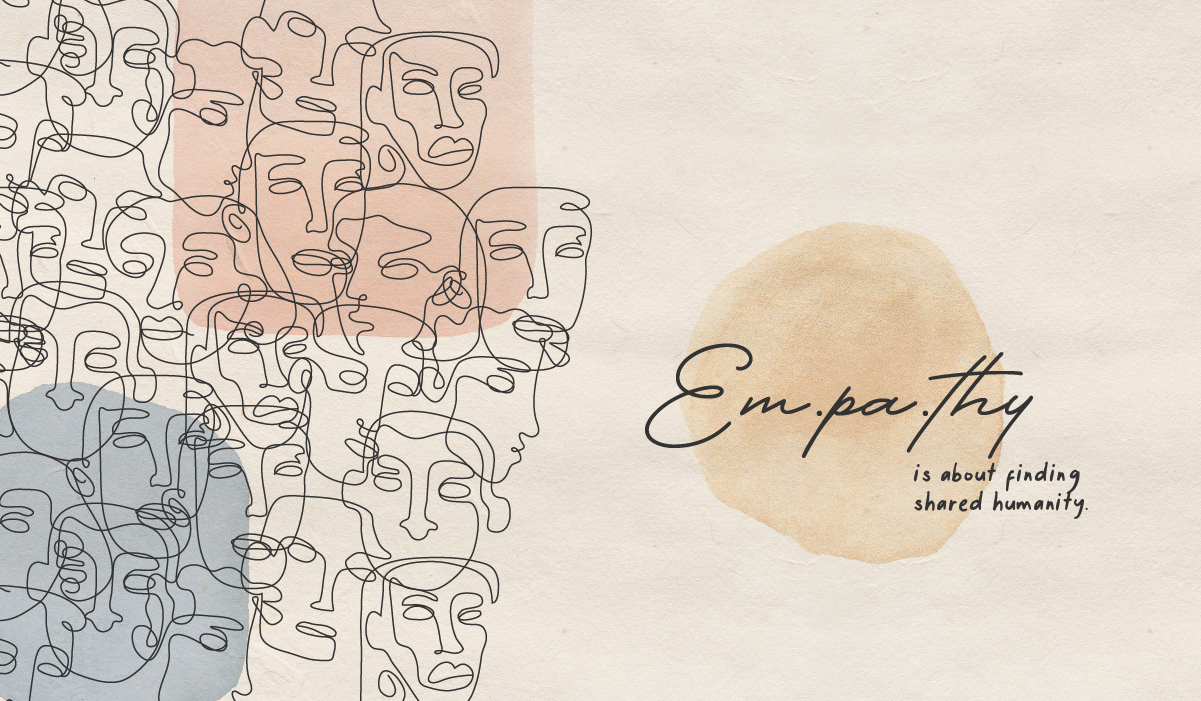
In the day-to-day life of big corporations, agencies or consulting companies it’s easy to forget the target consumer’s reality. Although consumers are on the core of everything that is done, thought and designed, oftentimes stakeholders know them through figures and reports, but rarely see them in flesh. It is a challenging task to make consumer insights known outside the CMI (Consumer & Market Insights) department and engage more of the company’s staff in the process of understanding the target consumer.
Today there is an increasing tendency to value big data and artificial intelligence – which we, at CBA B+G, totally support. However, we can’t forget the great value of building emotional and human ties throughout the research and innovation process, by using tools that promote an empathetic immersion in the lives of consumers.
But what exactly does empathy mean? According to the Australian philosopher Roman Krznaric, it’s about finding shared humanity. He believes that we are urgently in need of empathy to create the ‘social glue’ to hold our society together. From a business point of view, empathizing with consumers is not only ‘cool’; we believe it also leads to transforming, effective and positive results, in three different ways:
Storytelling is at the heart of any empathic process, and there are countless tools, non-digital, hybrid or completely virtual which engage the spectator in the story in a simple, touching and impactful way. Here are some tools and examples that can be applied to society and by brands.
A. Step into someone else’s shoes … literally
If empathy means to step into other people’s shoes, then why not literally do that? That is the proposal of the initiative called “A mile in my shoes” from the Australian National Maritime Museum, which invites visitors to wear shoes that belong to other (real!) people and listen to them telling parts of their stories. In São Paulo, the exhibition “Diálogo com o Tempo” (Dialogue with Time), hosted by Unibes Cultural, has created an immersion environment in the universe of old age, inspired by the same principle.
At CBA B+G, we have applied the same idea during an Innovation workshop held for Plenitude – a brand of disposable underwear, designed for people who suffer from incontinency. We have asked the participants to wear the underwear for three days, to put themselves in the consumers’ shoes and better understand their needs.
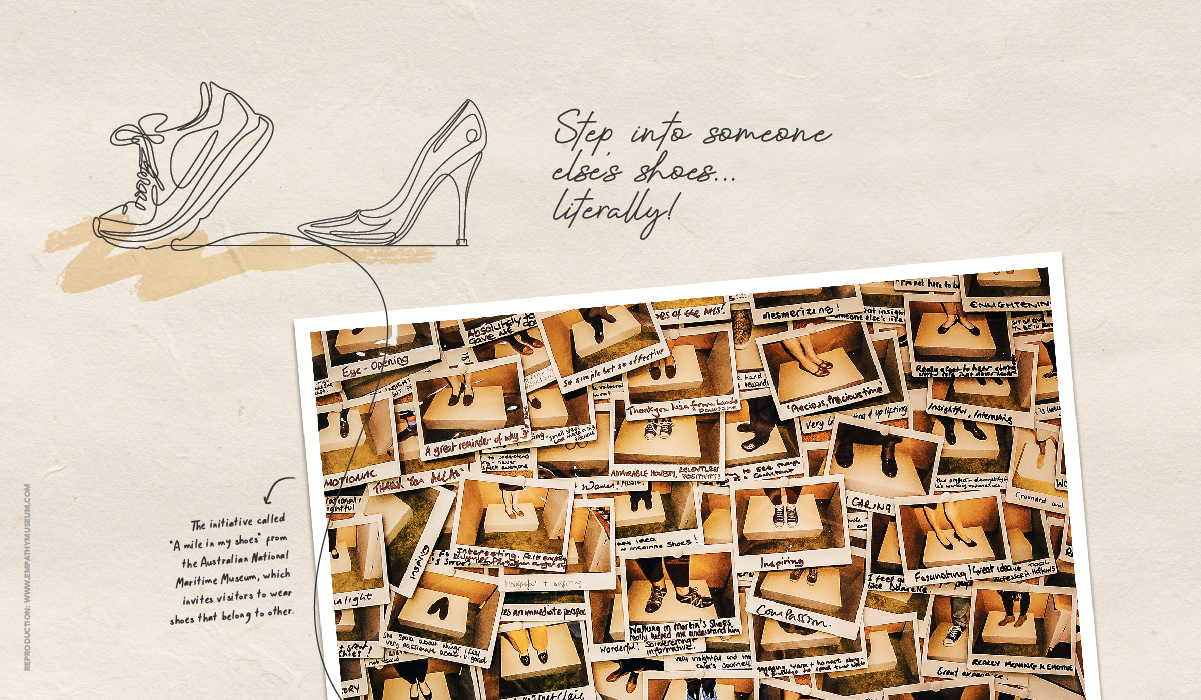
“Using the product myself was revealing. We have always focused on absorption, however I noticed opportunities to go beyond. These insights led to new innovative attributes for the product, which are currently being developed by our Engineering team. Today we are close to offering one more benefit to better meet our consumers’ needs”
Mônica Fernandes, CSI Adult Care Leader, Kimberly-Clark
B. Capture moments of life through films, audios and photographs
Films and photographs are powerful empathy devices. This thought led the Chinese artist Ai Wei Wei to create the film “Human Flow” to raise global awareness about the refugees crisis. Brands also make use of empathetic films to create impactful campaigns. “Thank you, Mom”, the most successful campaign in the history of P&G is really touching because it effectively puts spectators in the place of mothers, creating a strong sense of identification.
At CBA B+G, we have been running ethnographic surveys and online diaries about consumers’ journey, asking them to film moments of their lives using their mobile cameras. For one of the partners we work with, from a hitchhiking app, we used the methodology ‘fear accounts’, through which we kept in touch with the app users via WhatsApp during a week, asking them to send us an audio each time they got scared when using the service, telling us what happened and how they felt. This method allowed us to capture real and touching stories, spontaneously.
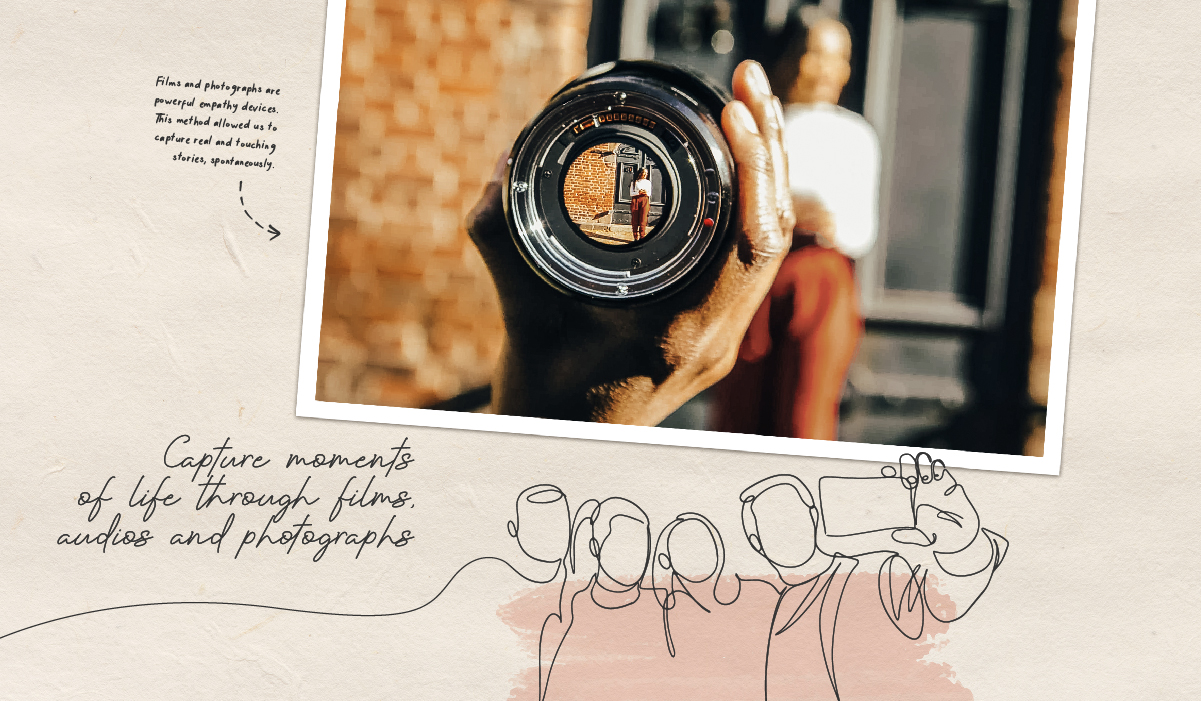
C. Immerse in someone else’s world with Virtual Reality (VR)
The VR technology uses a headset to place the spectator in a virtual environment with a 360 view, providing a more intimate and active immersion. For some people, technology is undoubtedly the best way to step into other people’s shoes. Technology has been used in games, science and arts, to recreate the way autistic people perceive the world, and as an invitation to reflect upon the effects of global warming.
At CBA B+G, we have devised for Nestlé a VR Project – Consumer Connections – to immerse in the lives of the target-consumers of three major brands of the company. One of the project’s expectations was to give everyone in the company – regardless of work department or position – the possibility to get to know the daily lives of people from different realities. The tool made it possible, for example, to follow a typical day in the life of Luiza, a teenager who lives in São Paulo and loves KitKat and skating. To Cibele Rodrigues, Research Manager, at CBA B+G, “the project was enriching and powerfully delightful. It refreshed the target, putting everyone on the same page. Moreover, we escaped the traditional reports, showing more humane journeys. At the end of the day, the figures made more sense, allowing executives to take more assertive decisions, closer to the consumer”.

“The immersion project using VR was one of the most incredible we have ever experienced, which made us think ‘why haven’t we done that before?’ The possibility to follow parts of consumers’ life is the icing on the cake for any insight or marketing professional. The approach was fundamental to make us understand the best moments and ways to connect with them”.
Demer Santos, Consumer & Marketplace Insight Manager, Nestlé
D. Blend consumers with clients, breaking barriers
Who says we cannot mix consumers and clients, spectators and artists, experts and laypeople? Breaking these barriers is also a powerful way to connect people and develop empathy.
We introduce this concept during our processes, joining clients and consumers to work face-to-face, without one-way mirrors and with no condescension. Today, we do the same remotely. Alex Espinosa, CBA B+G’s managing partner and Head of Innovation, explains that the objective is to “create ecosystems where clients, consumers, mentors and experts co-create together with a common purpose, enabling a multi perspective view of the challenge and incorporating experiences that boost the developed solution”.
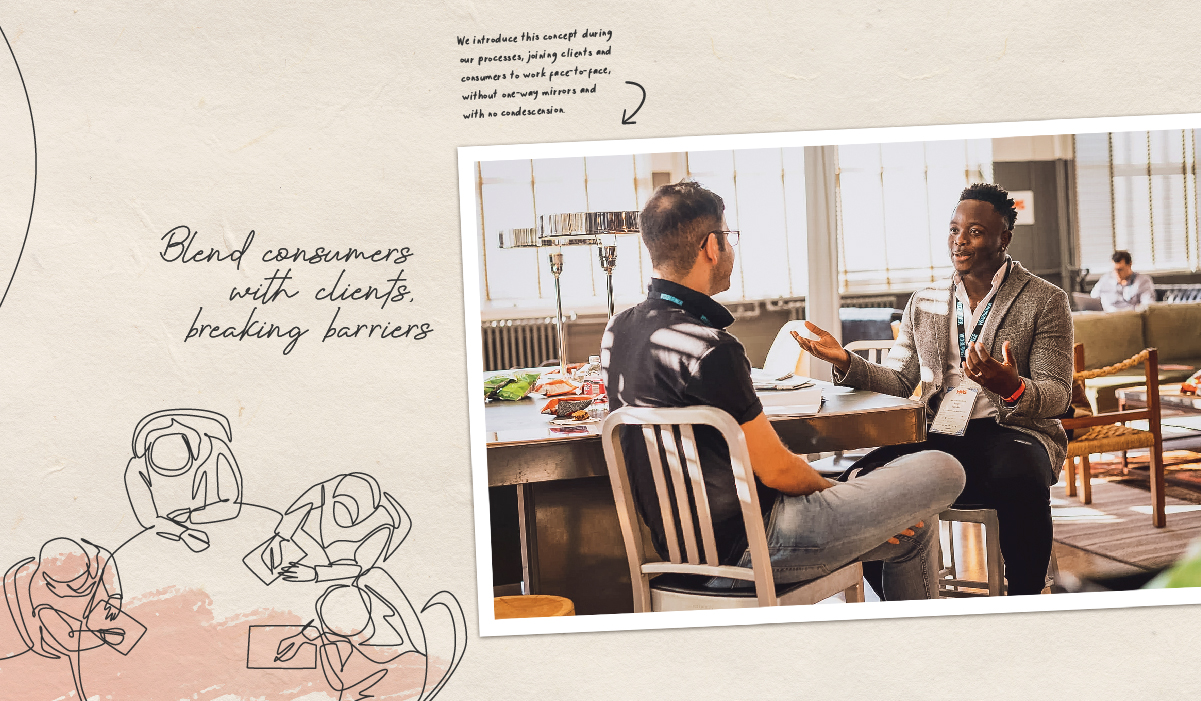
E. Join virtual with real, using Augmented Reality (AR)
AR has also been gaining space in our lives. This technology make it possible to mix elements from the virtual and real worlds with the advantage of being much more accessible, since it doesn’t require a headset and can be easily developed in an app. It has been largely used, both by entertainment games (who remembers the Pokémon Go fever?) as by brands that provide a product trial without the need to leave home. That’s the case of Ikea, that simulates how your sofa would look in your sitting room; or L’Oréal, that offers the possibility to virtually try on different lipstick colors before choosing one.
But how is augmented reality used in research and Innovation? We have recently developed, together with one of our business partners, an app that used AR in a disruptive way, to make a survey about absorbent pads products. Consumers were able to try different shapes and sizes of new products, simulating real use by projecting them in their panties or bikinis. To Alex Espinosa, “technology allows prototypes and products to reach millions of homes without the need of physically producing any of them, in real-time tests that result in products that better fit the target-consumer. It is the fastest and most effective way to validate your MVP (Minimum Viable Product) with consumers and find the added value and possible improvements within minutes”.
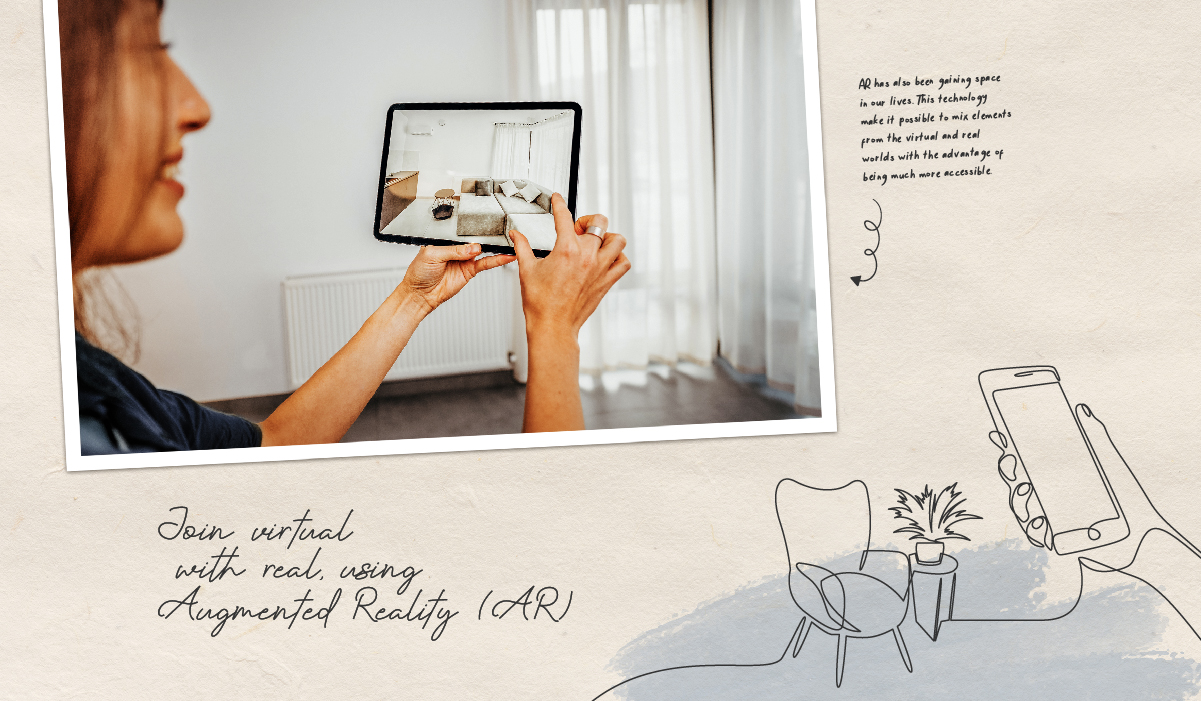
We may safely assume that extended reality will continue to evolve and improve to achieve astounding results. We bet on the use of Augmented Reality and other hybrid formats that explore the best of technology to project reality as perceived by others without disregarding human contact. Definitely, digital and analog realities are complementary in capturing insights more sensitively.
To delve into this issue of empathy and its tools more deeply, we recommend watching the TED talk by the Australian philosopher Roman Krznaric about how to start an empathy revolution, as well as the New Yorker’s beautiful immersive animated short-documentary film about detention camps in China. If you don’t have a VR headset or cardboard yet, it’s worth buying one and start playing with these new possibilities.
And of course, don’t hesitate to contact us to understand better how we can help your brand use these tools on your behalf. And if this topic inspires you and if you are or know someone who is a business professional, strategist or designer interested in joining our team, write to [email protected] telling us about your expectations, objectives and history. We are always looking for talent!
This article had the contribution of: Carmen Beer, Ana Cerqueira, Giuliana Sanchez, Thaísa Miyahara, Ana Paula Moreno, Alex Espinosa, Cibele Rodrigues, Demer Santos, Mônica Fernandes, Josy Lamenza, Daniela Irrazabal, Rosario Maglione, Renato Storni and Luis Bartolomei.
© CBA B+G 2023
Privacy Overview